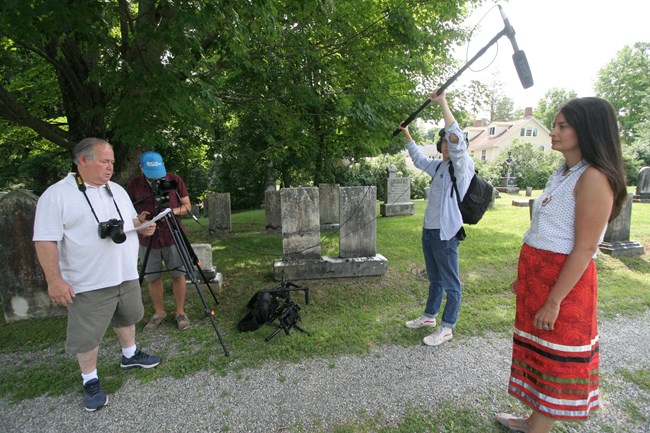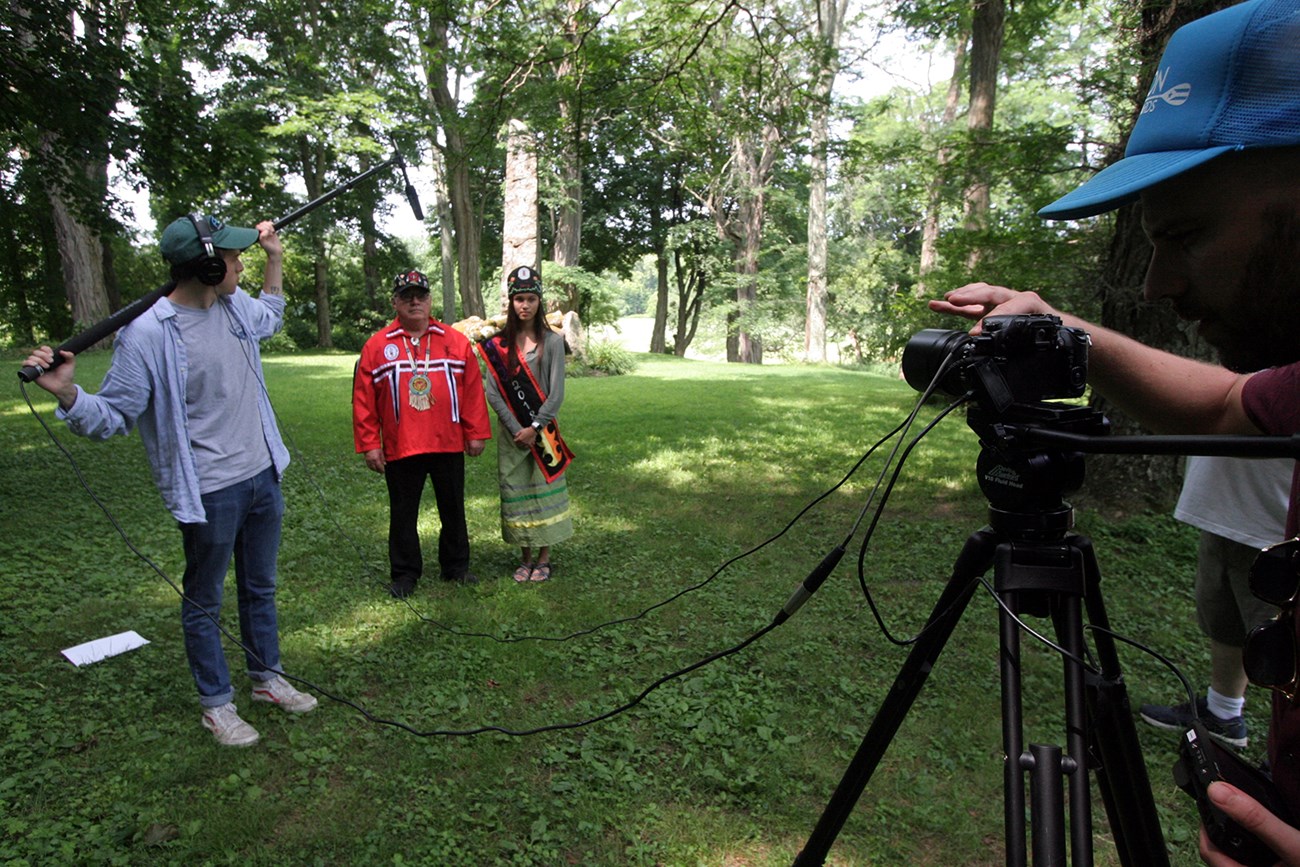Last updated: August 22, 2019
Article
“Footprints of Our Ancestors”: Descendants Bring Stockbridge Mohican History to Life in Virtual Tour

Photo by Dan Bolognani
Stockbridge, MA (July 24, 2019) – In 1734, a group of 150 Mohicans formed the town of Stockbridge, Massachusetts, in Mohican territory in what is now the Upper Housatonic Valley National Heritage Area. In July 2019, direct descendants of those original residents visited the town to record their stories as part of the “Footprints of Our Ancestors” project to share the Native American history of Stockbridge and its continued legacy today.
Mohicans are indigenous to the Hudson and Housatonic River Valleys since time immemorial. During the 1700s, as they faced increasing colonial pressure, the main body of the Mohican Nation made the difficult decision to accept an English missionary and live in a fragment of their homelands. Thus “Indiantown,” or Stockbridge, was formed.

Photo by Dan Bolognani
Stockbridge was intended to be jointly governed by the Mohican and English colonists. During the Revolutionary War, a large number of Stockbridge Indians, as the town’s Native residents came to be known, fought in the Continental Army against the British. Despite that, white colonists dispossessed the Stockbridge Indians of their lands by 1783, the same year the war ended. The Stockbridge Indian community was forced to move several more times before eventually settling in Wisconsin, where the headquarters of the Stockbridge-Munsee Community Band of Mohican Indians, a federally-recognized Tribal Nation, remains today.
“Footprints of Our Ancestors” was originally developed in 2016 by Bonney Hartley, enrolled member of the Stockbridge-Munsee Community, and local historian Rick Wilcox. They envisioned a mobile phone app with video narrations and historic mapping and imagery. In 2018, they debuted the walking tour as both a guided tour and a self-guided brochure and map. Housatonic Heritage, the nonprofit that manages the Upper Housatonic Valley NHA, approached Hartley and Wilcox to explore how their organization’s resources could bolster the “Footprints of Our Ancestors” project.
It has always been central to the project that the walking tour be shaped and narrated by members of the Stockbridge-Munsee Community speaking for themselves. With approval by the Stockbridge-Munsee Community’s Tribal Council, Housatonic Heritage coordinated with the Mohican Tribal Historic Preservation Office in New York and with local partners to plan the next phase. In July 2019, seven enrolled tribal members traveled to Stockbridge to film the narrations with a professional film crew. At each of the eleven stops on the tour, Stockbridge-Munsee members narrated the history associated with the location. They also recorded their personal reflections on their ancestral homeland and the connections it provided to their ancestors.

Photo by Dan Bolognani
It has always been central to the project that the walking tour be shaped and narrated by members of the Stockbridge-Munsee Community speaking for themselves. With approval by the Stockbridge-Munsee Community’s Tribal Council, Housatonic Heritage coordinated with the Mohican Tribal Historic Preservation Office in New York and with local partners to plan the next phase. In July 2019, seven enrolled tribal members traveled to Stockbridge to film the narrations with a professional film crew. At each of the eleven stops on the tour, Stockbridge-Munsee members narrated the history associated with the location. They also recorded their personal reflections on their ancestral homeland and the connections it provided to their ancestors.
“Housatonic Heritage was an early supporter,” said Bonney Hartley, Stockbridge-Munsee Tribal Historic Preservation Officer. “They recognize the value of this project and respect the integrity that the interpretation must be tribally led. Our tribe has always cared about and returned to our homelands since being forced to leave. However, the walking tour project is very up close and personal. Direct descendants are standing on their ancestor’s homesites, and interacting with the current homeowners, for example. It’s led to a lot of rethinking, and reconnecting, of historic relationships for all involved.”
Rather than a mobile app, Housatonic Heritage expects to launch an online portal for “Footprints of Our Ancestors” later this year. The virtual tour is part of a larger initiative by Housatonic Heritage, in coordination with the Mohican Tribal Historic Preservation Office in Troy, New York, to develop a Native American Heritage Trail throughout the region.

Photo by Dan Bolognani
Discover more news and stories from America's National Heritage Areas.
Success
Thank you. Your feedback has been received.
Error
alert message

